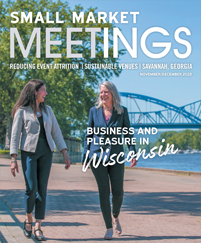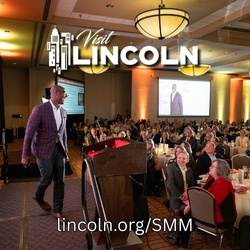“Pics or it didn’t happen,” as the kids say. In today’s Facebook-Instagram-Snapchat-TikTok world, documenting every event and capturing every moment has never been more important. And the same is true for meetings and conferences, trade shows and conventions. But while cameras can now be found in every pocket and purse, it’s still important for meeting planners to find professional photographers and videographers who can tell their organization’s story and deliver a narrative that serves their purposes, whether that’s sales, marketing, entertainment or education.
“It’s a really important line item to plan for and should be part of your overall marketing strategy,” said Nann Philips, founder and principal of Scurry Street Meeting Management in the Dallas metro area.
Here’s what Philips and two other experts had to say on how to improve photography and videography at your next event.
Budget-ography
When it comes to budgeting for an event photographer or videographer, the first step is “to include it in the budget,” Philips said with a laugh. “So many times it is an afterthought.” For a regional meeting of about 300 to 400 people, she has no qualms spending $3,000 to $5,000 on photography — plus travel, which is key and shouldn’t be a deal-breaker.
Although there’s no formula for how much to spend, planners should allocate roughly 1% to 3% of their event budget to photography, said Bob Christie, owner and founder of Orlando-based Christie’s Photographic Solutions, which specializes in corporate event photography and has seven offices nationwide.
Kelby Dolan, an Indianapolis-based videographer and owner of Dolan Videography, works with a lot of associations and has his clients develop a “good, better, best” budget model. He then walks them through what each level looks like, such as hiring a second videographer for “best,” while “better” means prioritizing production work over other bells and whistles. Sometimes, if an organization is just starting to include video, it means starting at “good,” then demonstrating return on investment before moving up to “better” or “best” in a few years.
Working With Photographers
Ideally, an organization would work with the same person consistently over a period, Philips said. That allows the photographer or videographer to develop a relationship with the organization, its leaders, planners and vendors, and gain an understanding about its brand personality. Some corporate events want very formal photos; other events want fun, dynamic, energy-filled moments. Years ago, Philips worked for a corporate organization that used the same photographer for all its events and flew her around the world. Doing that allows the photographer to develop rapport with C-level executives and celebrities, who then feel more comfortable, and planners can trust the photographer to act appropriately and practice discretion.
But if you’re starting from scratch or need to hire someone local for an event, word-of-mouth recommendations are paramount. Christie said planners should get referrals from trusted sources, such as other meeting planners, hotel catering/convention services and audiovisual partners. No matter what, don’t leave it to the last minute to start looking.
“Then you’re stuck with who’s available rather than someone who’s talented,” Christie said.
With referrals in hand, planners should make sure the photographer or videographer has experience shooting meetings or conferences, because it’s much different than shooting weddings. Also pore over portfolios to gauge if the person’s aesthetic fits well with the organization’s brand and needs.
Planners should make sure the photographer understands what to shoot and what not to shoot and knows how the organization intends to use the media assets, whether that’s for marketing, education, training or entertainment purposes. Go over the agenda and determine which speakers and sessions the photographer or videographer should shoot.
“They need to understand what the story is they’re going to tell,” Christie said.
Planners should also make sure the contract covers who owns the images and has rights to use them.
Crowdsourcing and Social Media
Social media has changed the game, but it hasn’t replaced professional photography — and it shouldn’t. Crowdsourcing photos and videos from event attendees is fun and has its place, but it also tends to deliver a lot of selfies and similar pictures, not the kind of media an organization needs and can use for years.
“You can get some beautiful images, but let that be a nice surprise — don’t rely on it,” Philips said.
One benefit of crowdsourcing is receiving immediate content, but someone needs to filter through that content to ensure it’s appropriate before posting, “and that’s a lot of work,” said Dolan, who is also director of communications for a fraternity. In that role, he appoints a handful of “ambassadors” — perhaps members or interns — to gather photos and videos during events. That kind of “selective crowdsourcing” means his ambassadors can get waivers, edit images and use the right vernacular and tagging when posting to social media.
Christie’s Photographic Solutions is rolling out face recognition software that has “been a social media rocket ship,” Christie said. Attendees can opt in at registration, like at a sponsor-based station. Then, when Christie’s photographers shoot an event, anytime the software picks up a photo of an attendee who signed up for the program, it sends the picture directly to them via text, which can also be branded.
Video In Demand
Demand for video has been on the rise for years, and the pandemic pushed it even higher.
“I believe this whole transition with virtual/digital events has raised people’s expectations of what will be available to them, whether or not they attend in person,” Philips said. In-person attendees now fully expect to have access to any content that is being captured, even after the event.
Sometimes that simply means sharing slides and audio, but there is “constant greater demand for footage of speaker sessions,” Dolan said. “People will watch video whenever they want; live sessions don’t matter as much as collecting it and having it available to someone.”
When it’s not a live feed, most associations want their speakers edited down for time and interest. People will watch a four-minute video over a 40-minute presentation. If you need to gather video from speakers or presenters, don’t do it via Zoom. Have them use a smartphone to record themselves, then send in the footage to ensure higher, more consistent quality, Dolan said. He has also seen an uptick in demand for event montages that capture the essence of the event or give people FOMO, fear of missing out, on future events.












